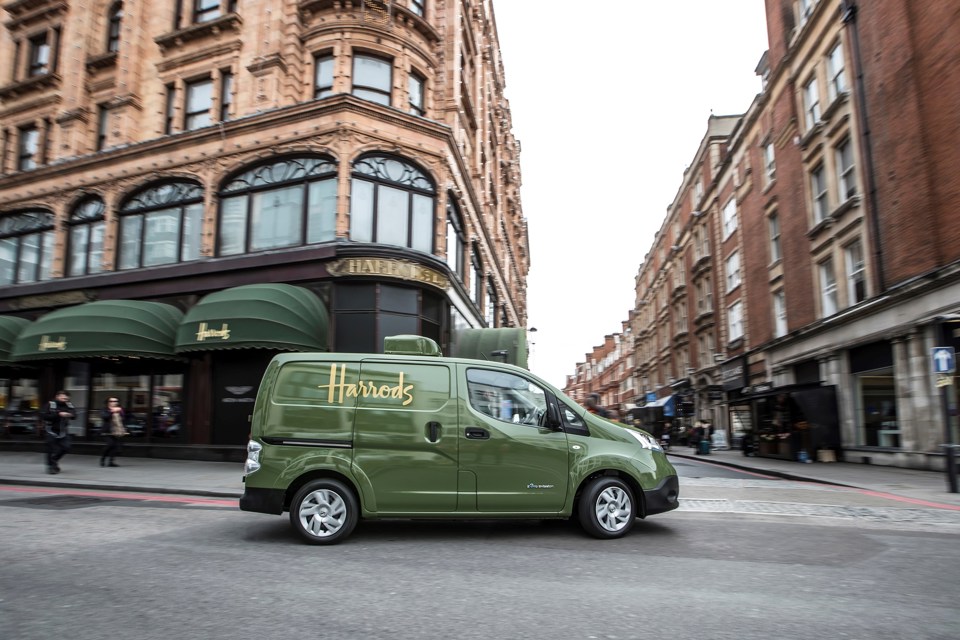London department store Harrods is adding an electric Nissan e-NV200 delivery van to its fleet, around 100 years after originally operating an electric van.
The e-NV200 has been specially adapted to perfectly fit Harrods’ delivery needs. The load space of the van has been fully refrigerated and shelving units added to allow for fresh groceries to be transported in optimum condition.
The exterior has also been wrapped in the traditional green and gold Harrods livery to make it recognisable as it travels around the city.
The e-NV200 has a range of up to 106 miles on a single charge, which means it is easily capable of making up to 50 deliveries per week covering an average distance of 150 miles in the London area with Harrods only needing to charge it once a week.
In 1919, the store used solid-tyred American Walker electric vans, later building its own fleet of 60 electric vehicles to deliver goods to local London customers. As petrol engines became more popular, the electric vans were slowly phased out.
Guy Cheston, media sales director at Harrods, said: “It’s wonderful to see an electric Harrods van on the roads of London again. As one of Britain’s largest established department stores, we are committed to reducing our carbon emissions and mitigating our environmental footprint.
"As part of our carbon and energy management policy, we have identified transportation as a key area where we can make a real impact.
“We have a strong heritage in developing innovative technology, both in-store and out, and Harrods was one of the first companies in the UK to develop an all-electric commercial fleet, introducing our first electric vehicle over 100 years ago.
"Electric technology has developed rapidly since our old fleet was in operation, and is now a far more sustainable transport solution. The e-NV200 was the obvious choice for us, allowing us to easily complete daily deliveries more sustainably and efficiently.”


















Nick - 17/01/2020 15:12
I remember my father ordering something from Harrods as a laugh, and it turning up in that strange looking electric vehicle. That was in the 1950s. Milk "floats" were always electric, and they were common until quite recently. What legislative incentives are required for fleets like courier companies, utility companies, the royal mail, van rental companies, to stop buying diesel/petrol vehicles, and should congestion zones come into it?